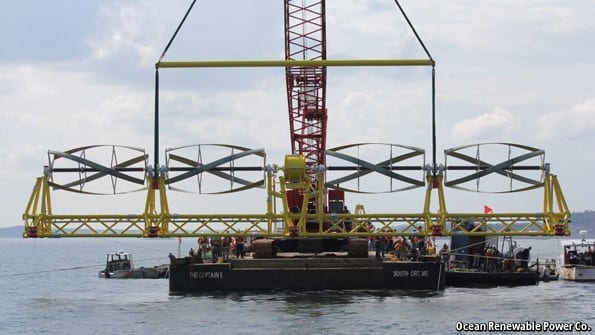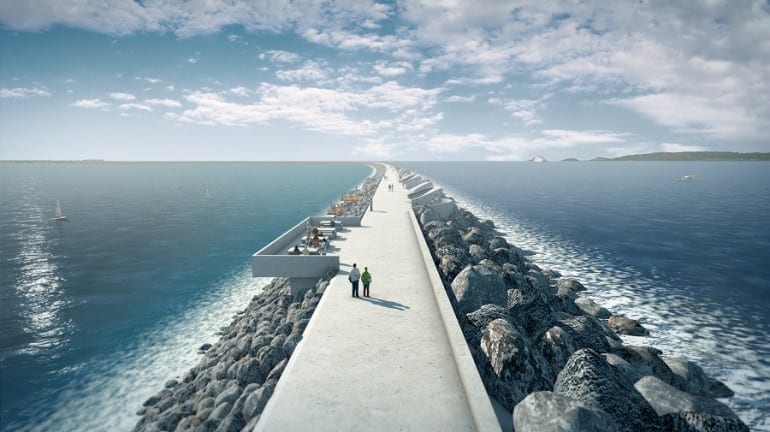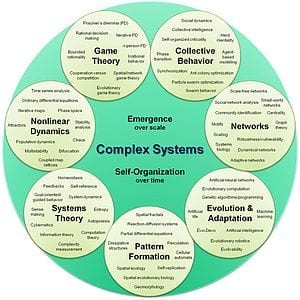ONE problem with renewable energy is that neither the wind nor the sun is reliable. That cannot, however, be said of the tides.
The Newtonian clockwork of sun and Moon can always be relied on. The problem with exploiting tidal power has, rather, been finding places to do it efficiently: bays or estuaries with a suitable tidal reach and a topography that permits a barrage to be constructed. Only then, with established designs, can turbines be installed through which the tide can ebb and flow.
That would change, though, if turbines could simply be attached to the sea floor. And several firms are trying to make it so. Some, such as Andritz Hydro Hammerfest, in Norway, and Marine Current Turbines from Bristol, in Britain, take the relatively simple approach of sticking what are little more than strengthened wind turbines onto the seabed.
In the case of such turbines, though, bigger is better. And, since a turbine is not much use if its blades stick above the surface, that means they need to be located in reasonably deep water. Which is a shame, because a lot of otherwise-suitable sites are too shallow.
Not all wind turbines work this way, though. Some smaller ones are skeletal cylindrical structures whose axes of rotation are at right-angles to the direction of the wind, rather than aligned with it. And that, with the important modification that this axis is horizontal rather than vertical, is the basis for several novel designs for tidal-power generators which can operate in shallow water too.
Engineers at Ocean Renewable Power Company, in Portland, Maine, and Kepler Energy, in London, both use this approach. And Ocean Renewable is starting to commercialise it. In September 2012 its TidGen generator was deployed in the Gulf of Maine. It thus became the first plant to deliver offshore-generated power of any kind (wind, wave or tidal) to an American electricity grid.
Kepler is a little behind, but is hoping to try out a full-scale version of its Transverse Horizontal Axis Water Turbine in the Bristol Channel soon. Its engineers’ calculations suggest this device will generate 50% more power from a given tidal stream that a conventional turbine can manage.
The Latest Bing News on:
Tidal power
- IEEFA: Tidal wave of new LNG supply to flood market amid demand uncertaintyon April 27, 2024 at 3:37 am
A statement issued yesterday by the Institute for Energy Economics and Financial Analysis (IEEFA), and shared to this journalist, indicates that major importing regions aim to reduce LNG demand ...
- Floating tidal energy turbine company to make waves in US waters: 'This milestone underlines growing global appetite'on April 26, 2024 at 3:30 am
"There are no single or simple solutions for figuring out the complexities of our future energy supply." Floating tidal energy turbine company to make waves in US waters: 'This milestone underlines ...
- Tidal vs. Qobuz: Which hi-res music streaming service is for you?on April 24, 2024 at 3:30 am
Below, we compare Tidal and Qobuz based on price, sound quality, and supported devices to determine which platform is better. Tidal’s loss of near exclusivity on the hi-res front is likely the reason ...
- A 'Perfect Tidal Storm' Is Making This Newly Discovered Planet Glowon April 22, 2024 at 9:25 am
Can tidal forces cause an exoplanet's surface to radiate heat? This is what a recent study accepted to The Astronomical Journal hopes to address as a team of international researchers used data ...
- Wave and Tidal Energy Market Size Projected to Surge $5.1 Billion Growth by 2033, Exhibit a CAGR of 12.5%on April 18, 2024 at 7:00 pm
Wave and tidal energy market size from USD 1.6 billion in 2023 to USD 5.1 billion in 10 years. The increasing demand for renewable sources of energy drives the market's growth. North America emerged ...
- City officials propose construction of world's largest tidal power generator: 'A huge step'on April 11, 2024 at 1:11 am
Officials in Liverpool, England, are proposing plans to build the largest tidal power generator in the world on the River Mersey. The proposed Mersey Tidal Power project, which would help the city ...
- US electric utilities brace for surge in power demand from data centerson April 10, 2024 at 8:28 am
April 10 (Reuters) - U.S. electric utilities predict a tidal wave of new demand from data centers powering technology like generative AI, with some power companies projecting electricity sales ...
- Tanya Plibersek’s proposal to save Toondah Harbour is a win for both threatened species and people poweron April 9, 2024 at 6:18 pm
Once a trickle, the movement to save Queensland’s Toondah Harbour has become a tidal wave – and a testament to the power of community in environmental conservation ...
- Tidal power dam proposed for Cobscook Bayon April 1, 2024 at 5:00 pm
Credit: Bill Trotter / BDN Roughly a decade after a tidal power project was proposed but never built in the Washington County town of Pembroke, another developer wants to construct an electric dam ...
The Latest Google Headlines on:
Tidal power
[google_news title=”” keyword=”Tidal power” num_posts=”10″ blurb_length=”0″ show_thumb=”left”]
The Latest Bing News on:
Tidal-power generators
- IEEFA: Tidal wave of new LNG supply to flood market amid demand uncertaintyon April 27, 2024 at 3:37 am
A statement issued yesterday by the Institute for Energy Economics and Financial Analysis (IEEFA), and shared to this journalist, indicates that major importing regions aim to reduce LNG demand ...
- Floating tidal energy turbine company to make waves in US waters: 'This milestone underlines growing global appetite'on April 26, 2024 at 3:30 am
"There are no single or simple solutions for figuring out the complexities of our future energy supply." Floating tidal energy turbine company to make waves in US waters: 'This milestone underlines ...
- Radiating exoplanet discovered in 'perfect tidal storm'on April 22, 2024 at 9:25 am
Can tidal forces cause an exoplanet's surface to radiate heat? This is what a study accepted to the Astronomical Journal hopes to address as a team of international researchers used data collected ...
- Wave and Tidal Energy Market Size Projected to Surge $5.1 Billion Growth by 2033, Exhibit a CAGR of 12.5%on April 18, 2024 at 7:00 pm
Wave and tidal energy market size from USD 1.6 billion in 2023 to USD 5.1 billion in 10 years. The increasing demand for renewable sources of energy drives the market's growth. North America emerged ...
- Tidal power barrage revived in new proposal for Pembrokeon April 11, 2024 at 5:00 pm
The Pennamaquan River in Pembroke is once again being proposed as the site of a tidal barrage to create electric power, with a new name but with a similar design to one proposed to the Federal Energy ...
- City officials propose construction of world's largest tidal power generator: 'A huge step'on April 11, 2024 at 1:11 am
Officials in Liverpool, England, are proposing plans to build the largest tidal power generator in the world on the River Mersey. The proposed Mersey Tidal Power project, which would help the city ...
- Tidal energyon March 27, 2024 at 3:51 am
For tidal power to work, you need a really strong flow ... the tide is used to turn the blades of the turbines. This powers generators that convert the kinetic energy into electrical energy ...
- tidal poweron February 29, 2024 at 9:53 pm
E.ON has been given the green light to build a £60m renewable energy plant on the site of a former coal-fired power station. A commercial-scale tidal generator was connected to the national grid for ...
The Latest Google Headlines on:
Tidal-power generators
[google_news title=”” keyword=”tidal-power generators” num_posts=”10″ blurb_length=”0″ show_thumb=”left”]











